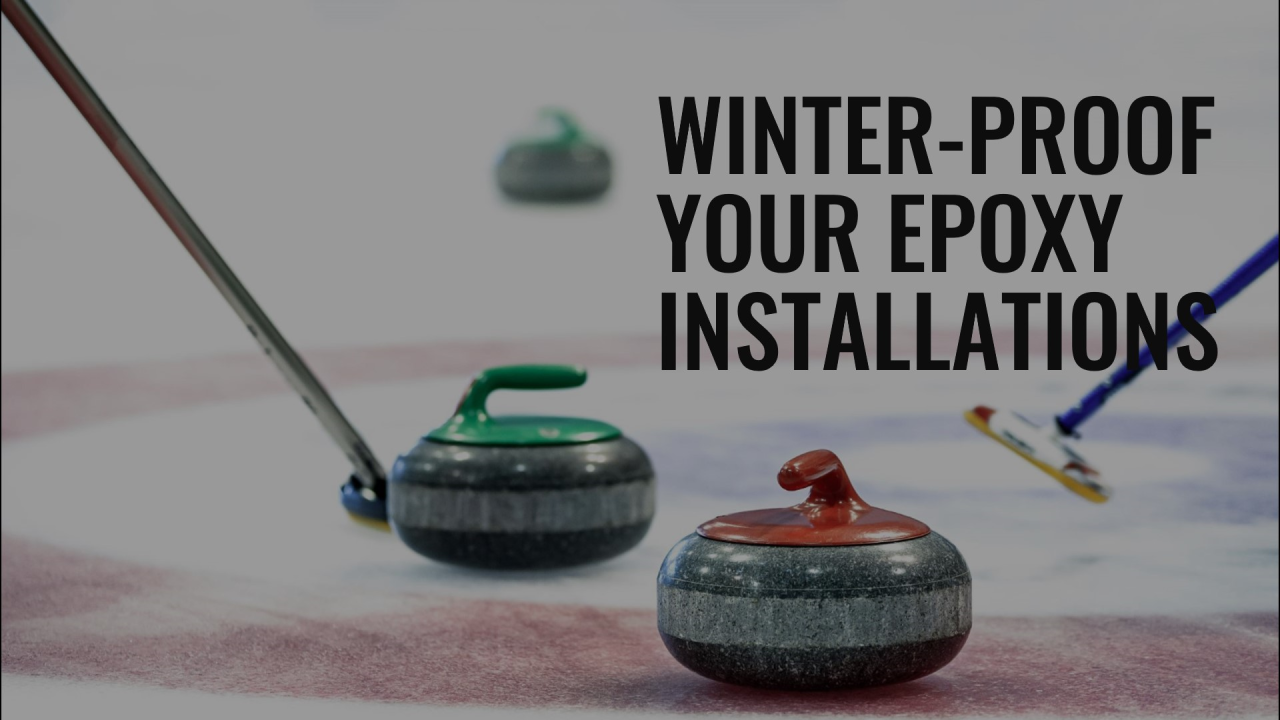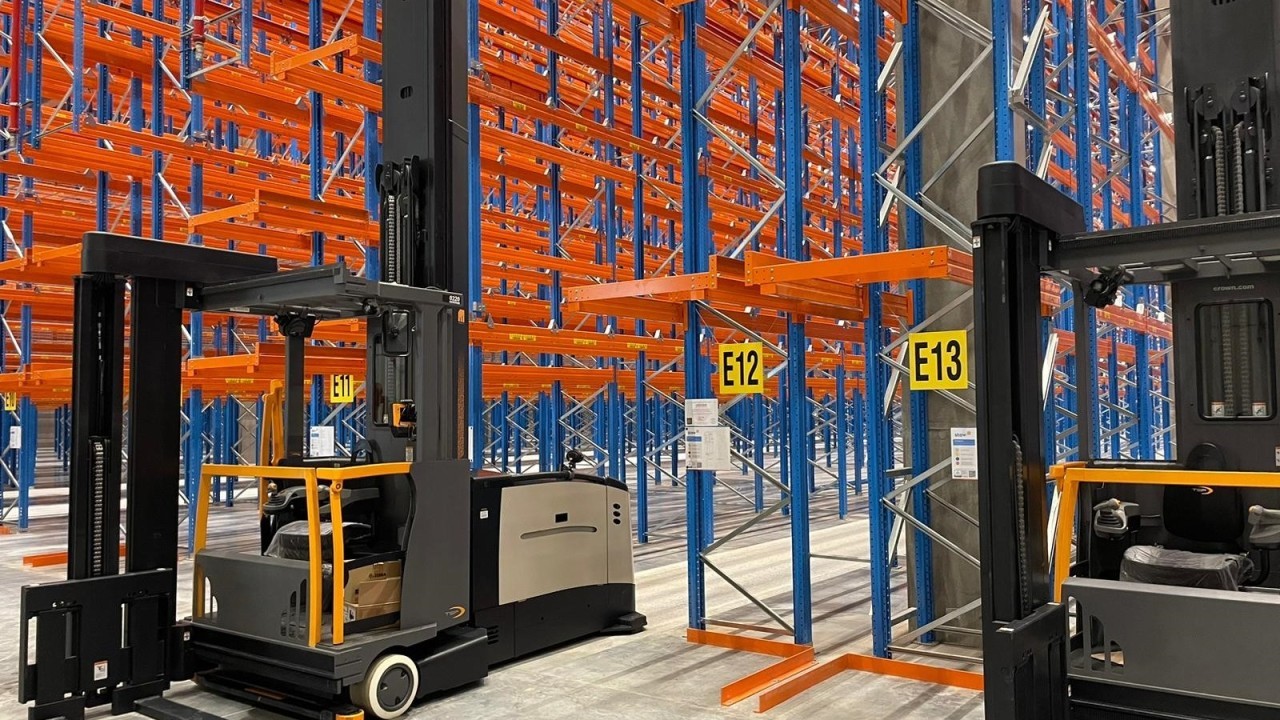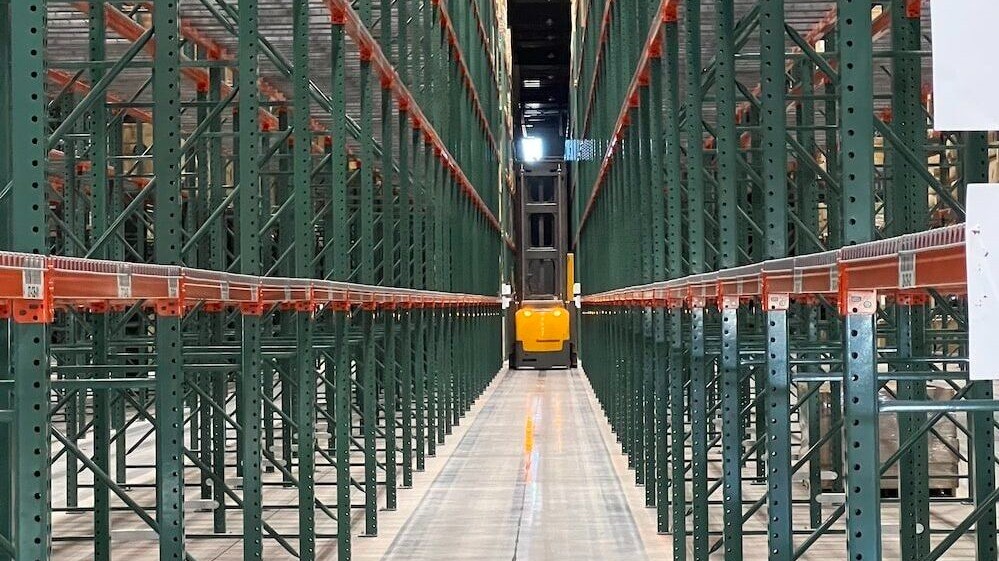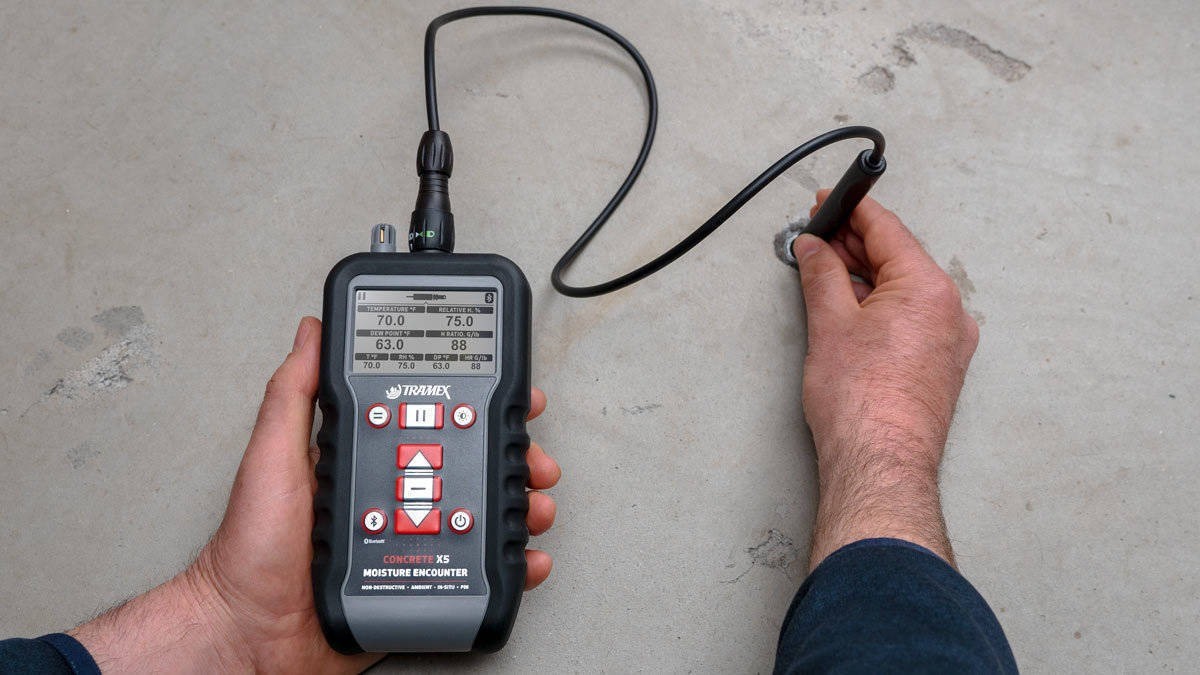Winter is here, and with it comes a unique set of challenges for epoxy flooring installations. From cold temperatures to moisture control, winter conditions can throw a wrench into even the most well-planned projects. But with the right approach, you can achieve flawless results every time. In this edition, we’ll cover:
- ✅ How cold weather impacts epoxy materials and curing.
- ✅ Best practices for logistics and material handling in low temperatures.
- ✅ Tricks to ensure seamless applications despite winter’s challenges.
The Impact of Winter on Epoxy Installations
Cold Substrates Slow Curing
- Issue: Low temperatures (<10°C/50°F) delay curing, leading to weak bonds or incomplete hardening.
- Problem: Delays timelines and risks adhesion failure.
- Solution: Pre-warm the substrate with heaters or blankets and extend curing times as needed.
Increased Risk of Condensation
- Issue: Substrate temperature below the dew point causes moisture to form, leading to poor adhesion.
- Problem: Can cause bubbling, blistering, or delamination.
- Solution: Ensure the substrate is 3°C/5°F above the dew point and use dehumidifiers if needed.
Material Viscosity Changes
- Issue: Cold makes epoxy thicker, reducing flow and self-leveling.
- Problem: Harder to mix and apply, leading to uneven coverage.
- Solution: Pre-condition materials at 20-25°C/68-77°F and use warming devices for resins and hardeners.
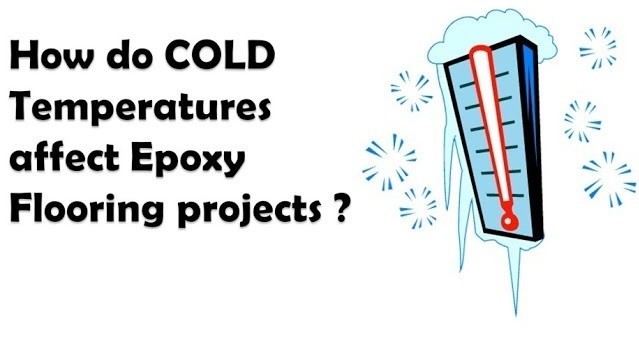
Planning Logistics for Winter Installations
1. Precondition Materials
- Why It’s Important: Epoxy materials are temperature-sensitive. If they’re too cold, they become thick and difficult to work with, affecting application and curing.
- What to Do: Store all resins and hardeners in a temperature-controlled environment (20-25°C/68-77°F). Bring materials to the job site only when needed to prevent them from cooling. Use drum heaters, warming cabinets, or electric blankets to maintain optimal material temperatures.
- Tip: Warm materials mix quicker and flow better, ensuring even coverage and consistent curing.
2. Heated Transportation
- Why It’s Important: During transit, materials are exposed to outdoor temperatures, which can chill them below their optimal range.
- What to Do: Transport epoxy materials to the site using heated trucks or insulated containers. Upon arrival, check the temperature of the materials using an infrared thermometer. Avoid delays that leave materials exposed to the cold for extended periods.
- Tip: Plan deliveries during warmer parts of the day when possible.
3. Schedule Around Weather
- Why It’s Important: Unpredictable winter weather can create conditions unsuitable for installation, such as freezing temperatures or high humidity.
- What to Do: Monitor the weather forecast closely and plan installations during stable conditions. Avoid scheduling work during extreme cold or wet weather. Allow for flexibility in the timeline to accommodate potential delays.
- Tip: Add extra time to the project schedule for slower curing in cold conditions.

Material Handling Tricks for Cold Conditions
1. Warm the Substrate
- Why It’s Important: Concrete retains cold temperatures, slowing curing and increasing condensation risks.
- What to Do: Use portable space heaters or heat blankets to raise the substrate temperature to the manufacturer’s recommended range (usually above 10°C/50°F). Preheat the substrate for at least 24 hours before installation. Ensure the substrate temperature stays 3°C (5°F) above the dew point during application.
- Tip: Focus heating efforts on corners and edges, as these areas cool faster.
2. Use Accelerators
- Why It’s Important: Accelerators speed up the curing process, allowing workers to work efficiently in low temperatures.
- What to Do: Use manufacturer-approved accelerators to maintain curing schedules in cold environments. Adjust mixing ratios carefully to avoid over-acceleration, which can lead to brittle coatings.
- Tip: Test a small area before full-scale application to ensure the accelerator performs as expected.
3. Keep Tools Warm
- Why It’s Important: Cold tools can chill the epoxy during mixing and application, reducing flow and workability.
- What to Do: Store rollers, trowels, and mixing paddles in a heated area until use. Rotate tools during application to ensure they remain warm.
- Tip: Avoid placing tools on cold concrete surfaces during breaks to prevent them from cooling.
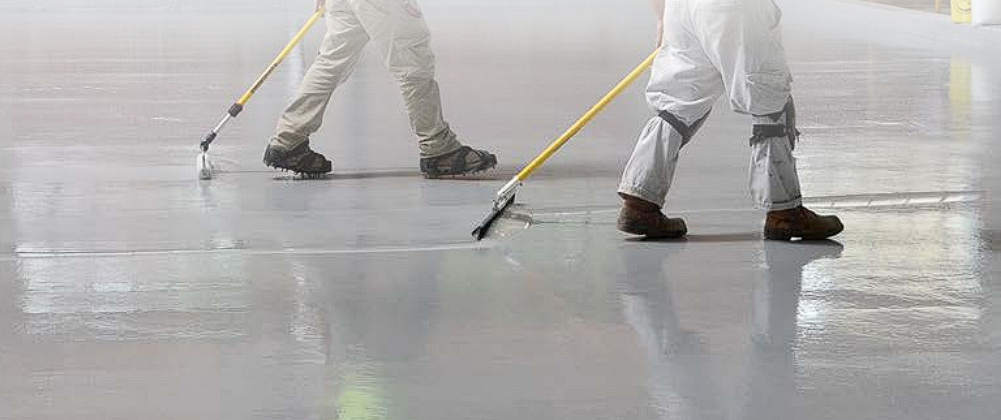
Best Practices for Winter Applications
Winter installations demand careful management of environmental conditions. Please follow these steps to make a successful application.
1. Monitor Conditions Constantly
- Why It’s Important: Temperature and humidity can fluctuate throughout the day, affecting curing and application.
- What to Do: Use hygrometers to track relative humidity and dew point. Measure air and substrate temperatures regularly using infrared thermometers. Log all readings to make sure they comply with product specifications.
- Tip: Take readings before, during, and after application to avoid surprises.
2. Set Up Temporary Climate Control
- Why It’s Important: Maintaining a stable environment ensures consistent curing and prevents condensation.
- What to Do: Use temporary enclosures or tents with heaters to keep the workspace above the required temperature. Avoid direct airflow on the substrate, which can cause uneven curing or surface defects.
- Tip: Add dehumidifiers to reduce ambient moisture in high-humidity conditions.
3. Extend Curing Times
- Why It’s Important: Cold conditions slow down the chemical reactions required for curing.
- What to Do: Follow the manufacturer’s guidelines for extended curing times in low temperatures. Protect the area from foot traffic and equipment until the epoxy has fully cured.
- Tip: Communicate extended timelines with clients to set realistic expectations.
4. Prepare for Contingencies
- Why It’s Important: Unexpected weather changes can disrupt the application process.
- What to Do: Keep backup heating equipment on-site to maintain consistent conditions. Schedule alternative dates in case of extreme cold or high humidity.
- Tip: Stock extra materials in a temperature-controlled area to avoid shortages or delays.
Key Takeaways
Warming the substrate, using accelerators, and setting up climate controls can mitigate the challenges of winter installations. Regular monitoring and contingency planning ensure a smooth application process and durable, high-quality results.
Are you ready to tackle your next winter project? Let’s discuss how we can help ensure flawless installations, no matter the weather.

